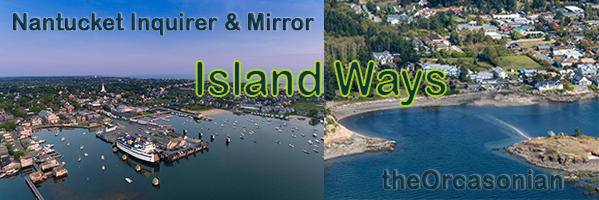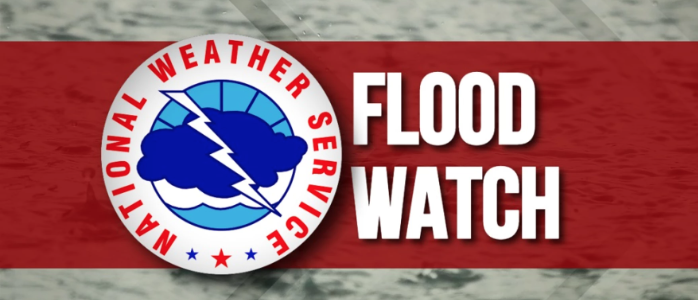Orcas and Nantucket Islands are each roughly the same size and the same distance off their respective coasts. We share the same concerns about the high cost of living, lack of affordable housing, tourist management, ferry problems and environmental degradation. We are living on opposite ends of the country but many of the issues and opportunities are the same. Recently theOrcasonian and the Nantucket Inquirer and Mirror decided to share articles of mutual interest with our readers. The following article from Nantucket should sound very familiar.
||| FROM THE NANTUCKET INQUIRER AND MIRROR |||
(Dec. 22, 2023) With more frequent and intense storms battering Massachusetts’ shores, the state’s Department of Environmental Protection released new draft regulations Friday to “protect both communities and infrastructure from the impacts of climate change.”
The proposed regulations are intended to help protect areas vulnerable to sea-level rise and storm surge. Among other changes, the rules would restrict development in the most vulnerable areas of the coastal floodplain and promote nature-based solutions to flooding.
“The extreme weather that we’re seeing across the commonwealth, across the nation, across the globe, in some instances, is another reminder that climate change is here in Massachusetts, and that we are particularly vulnerable to both inland and coastal flooding,” said MassDEP commissioner Bonnie Heiple.
More than 20 inches of rain fell in Boston during the summer of 2023, the second highest total on record, according to the National Weather Service. Floods devastated farmland in the western part of the state and coastal cities and towns experienced water running through their streets a handful of times throughout the summer.
“We’ve seen infrastructure fail. We’ve seen significant damage to homes and businesses, including farms, and we’re seeing the economic ramifications of that as well,” Heiple said.
This includes requiring that new development in areas of the coastal floodplain, where most storm damage occurs, be elevated. The regulations also seek to minimize new development altogether in the most vulnerable areas of the coast, typically small areas of land directly on the shore.
“In that outermost zone where wave action tends to be over three feet tall, there would be no new development permitted,” Heiple said. “So these houses that are being built in areas that are increasingly perilous to build, the proposal is that that type of development would no longer be allowed, redevelopment would still be allowed subject to certain standards.”
Environmental advocates say over-developing the shoreline contributes to coastal erosion and disrupts native species’ habitats, while others argue that the valuable property sales are good for the economy.
Heiple told reporters Thursday that restricting development in these areas is better for the community and the natural environment, as well as homeowners, who would have to pay to keep up with extensive property damage every year.
The coastal floodplain in Massachusetts hosts nearly $55 billion in structures, of which about $40 billion is residential, $12 billion is industrial and $2.5 billion is commercial, according to MassDEP. Of the nearly 2.5 million people living within Massachusetts’ 78 coastal communities, approximately 55 percent are in “environmental justice communities,” which are made up primarily of people of color, low-income populations or communities with language barriers.
About 10 percent of this “most vulnerable” section of the coastal floodplain will be covered by these new development-restricting regulations, Heiple said, as much of this property is already developed or covered by other regulations for beaches or wetlands.
“It’s actually quite a small slice when you see the mapping. It’s little bits and pieces of of the coastline that are still available,” she said. “We think it’s really important that we’re not continuing to build in those areas. But this is, this won’t affect broad swaths of remaining coastline that would be subject to development.”
In addition to restricting development in the most vulnerable areas, the updates encourage nature-based approaches to improve resilience, such as restoration of salt marshes, coastal dunes and barrier beaches on the coast, as well as inland wetlands.
Under the amended regulations, MassDEP would create a new type of credit for “Green Site Design.” These credits could be given to developers who use natural solutions — like trees and buffer zones — to manage stormwater, instead of more expensive detention basins and other traditional infrastructure.
Stormwater runoff picks up fertilizer, oil, pesticides, dirt and other pollutants as it makes its way through storm drains and dumps into freshwater and the ocean without being treated.
The Green Site Design credits aren’t monetary credits, but are a way of excusing the developer from having to construct infrastructure, stormwater pipes and detention basins if they use natural resources instead.
“It’s a credit in terms of how much stormwater you’re managing. So if you put in a certain number of trees or you have a swale, the Conservation Commission will be able to say something like, ‘Oh, we see that you get credit for 25 or 50 percent of the stormwater that you would have managed,'” said Kathleen Baskin, assistant commissioner at MassDEP’s Bureau of Water Resources.
“The development community is excited about this too, because it’s actually less costly to put in these natural solutions,” Baskin said.
MassDEP officials said they worked with other state agencies, environmental groups, scientists and members of the development community such as the Home Builders and Remodelers Association over several years to draft these regulatory re-writes.
The wetlands amendments also use up-to-date data to create the new standards – replacing the 1961 data that is currently used.
Using outdated data to design stormwater systems means pipes can be too small to carry increased volumes of water, resulting in overflows and flooding, according to MassDEP.
“Right now we’re using data from 1961, which somebody said recently is older than the moon landing,” Baskin said. “So it’s time for us to update and get ready for the extreme events of today.”
The new regulations are based on data from 2019, the most recently available information from the National Oceanic and Atmospheric Administration.
MassDEP is holding a public comment period on the draft regulations for 70 days, due March 1. MassDEP will hold three virtual public information sessions, two on Jan. 18 and one on Jan. 23. Public hearings will be held over Zoom on Jan. 31 and Feb. 1.
**If you are reading theOrcasonian for free, thank your fellow islanders. If you would like to support theOrcasonian CLICK HERE to set your modestly-priced, voluntary subscription. Otherwise, no worries; we’re happy to share with you.**






